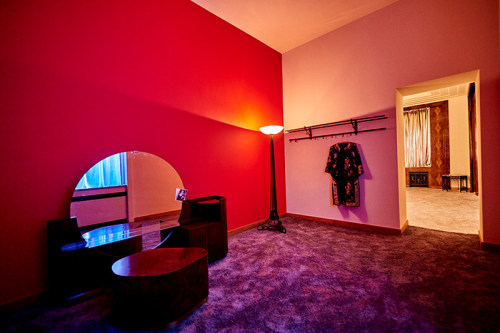
Curators: Tino Sehgal, Dorothea von Hantelmann and Asad Raza.
In Western societies, before the advent of the modern era, art had a different function. It decorated architecture, spaces and environments, catalysing social interactions between people. With the inception of modernity around 1800, the idea of a decorative artwork became a contradiction in terms. Painting was separated from architecture and became autonomous, thereby abandoning decoration as its primary function. Historically, this was the end of the decorative and integrated aesthetic object and the advent of the modern idea of the work of art. From now on, as Hegel writes in the Aesthetics the artwork’s function is not merely filling surfaces on a wall; on the contrary, it is there on its own account.(1) Taken from serving a function as part of an environment, the artwork was uplifted to a position where it became a center of meaning in its own right, occupying the place of the social exchange it had hitherto fostered. Modernity, in this sense, is not only represented as a set of new artistic styles, forms, and content. It signifies something even more fundamental, a change in the mode of how aesthetic objects function and how they communicate: while a decorative element attracts the gaze only to then release it again into the surroundings, the artwork attracts the gaze like a magnet to arrest it.
The museum was and still is the driving force behind this process, the place which epitomizes the idea of the object as a meaningful and valuable entity, in relation to which an individual recognizes and reflects on itself. The museum is the machine that not only pulls the object away from praxis, but that creates a whole ritual to uplift it to center stage.
The artists that Decor assembles share an ambition to categorically reconfigure this specific mode of functioning. They do not participate in the specifically modern Western anxiety that fears the decorative capacity of artistic products and instead wishes to emancipate art from decoration. In contrast, these artists embrace the decorative as a fundamental aspect of the plastic arts and see a political potential in operating with it. These approaches also open a new dialogue with traditions of decoration and ornamentation that are rooted in Eastern aesthetics. ‘Decorative’, however, should in this context not be taken as merely ornamental nor, in its negative connotation, as superficially pleasant. The decorative is taken up as a device in order to realize a different mode of art’s operation, of weakening art’s so called autonomy, in order to restore the objects intersubjective and social capacities. As décor, the object simply cannot exist autonomously as it by definition only exists in relation to a spatial context. It cannot be the focus of all attention and meaning production as it is constitutively linked to serving a function. Within the context of Villa Empain – itself a place that is highly marked by decoration – this exhibition will be an exhibition about the decorative in modern and contemporary art and at the same time simply be a decoration of the Villa.
(1): Georg Wilhelm Friedrich Hegel, Aesthetics: Lectures on Fine Art, vol. 2 (Oxford: Clarendon Press, 1975), p. 807.
Artists include:
Carl Andre, Marcel Broodthaers, Daniel Buren, Latifa Echakhch, Monir Shahroudy Farmanfarmaian, Dominique Gonzalez-Foerster, Felix Gonzalez-Torres, Pierre Huyghe, Waqas Khan, Jeff Koons, Milena Muzquiz, Jorge Pardo, Philippe Parreno, Jeroen de Rijke/Willem de Rooij, Rosemarie Trockel and Andy Warhol.